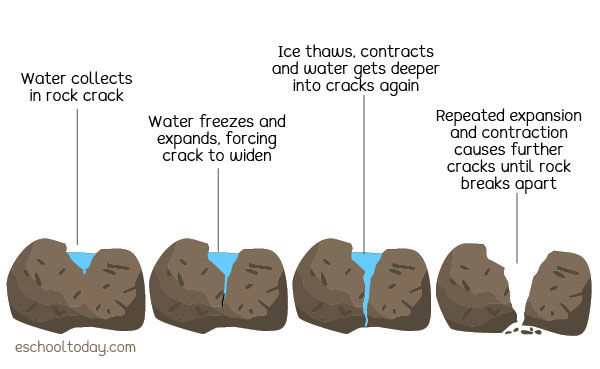- Rocks
Physical Weathering
Physical factors such as freezing and thawing, temperature, rain, winds, waves, water pressure, and others can cause rocks to break up into tiny pieces. Specific types of physical weathering occur in specific places.
Here are a few examples:
Weathering by temperature changes:
The sun’s energy can heat rocks to very high temperatures. The heating causes rocks like granite to expand. As temperatures fall, the rocks cool down and contract. Continuous expansion and contraction cause pressure on the outer layers of the rock. Cracks develop as a result, and eventually, the outer layers of the rock wear off. This is also known as exfoliation.
Weathering by water, wind, and waves:
Winds, water, and waves pound on rocks and wear them up. Prolonged action causes larger rocks with rugged surfaces to smoothen. During runoff, water carries sand and smaller debris and smashes them against larger rocks in their path. The resulting abrasion causes the wearing of rocks.
Freeze and thaw:
Put a glass of water in a freezer, and it will break. Why? That is because water expands when it freezes and forces its way out of the bottle. Take a look at the diagram below:

When water collects in rock pores and cracks and spaces they expand when they freeze, particularly in cold climates. The freezing widens and causes additional cracks. When the ice thaws, the water enters into new cracks again and causes further cracks as they freeze. Soon the rocks break apart.
